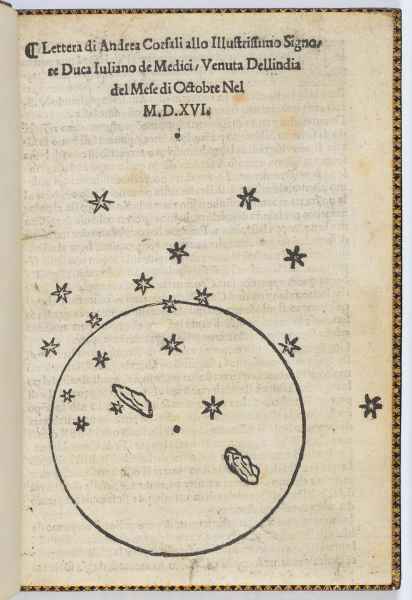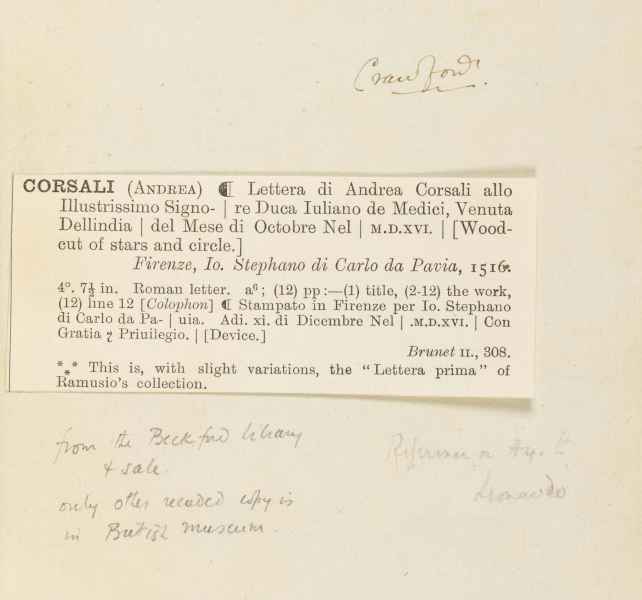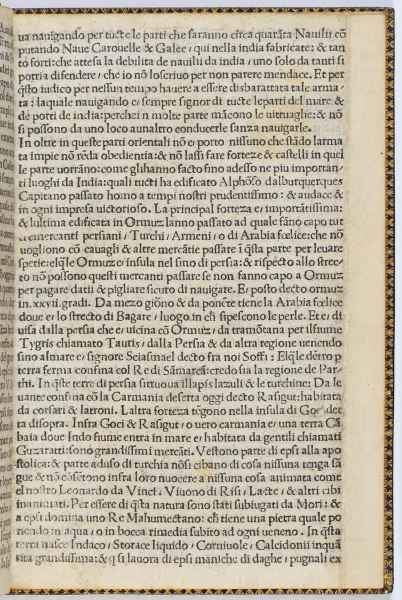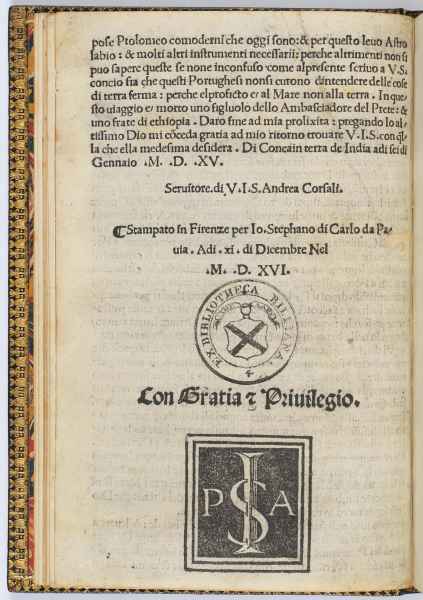Born in Florence, of a family coming from Monteboro, a locality not far from Empoli, he was in Rome with Leonardo when he was assigned by Pope Leo X Medici to take a message to Ethiopia. He left by ship from Portugal, and, upon reaching India wrote to Giuliano de’ Medici. The letter, dated January 6, 1515 according to the Florentine calendar (1516), contains an ambiguous mention of Leonardo, which has given rise to his fame as a "vegetarian" and "animalist": «Where the river Indo flows into the sea it is inhabited by people called Guzaratti… They do not eat anything that contains blood, and do not let anyone among them harm any living thing, like our own Leonardo da Vinci. They live on rice, milk and other inanimate foods [...]» (documented in a section of the Ideal Museum at Vinci).
Andrea Corsali is also mentioned in the De Subtilitate by Girolamo Cardano (1501-1576), son of the mathematician Fazio, a friend of Leonardo's.
He conducted important astronomical and geographic investigations; corrected Ptolemy's error on the longitude between the African coast and that of India; was the first to discover the existence of New Guinea; distinguished Sumatra from Ceylon and furnished an exact description of the customs and habits of the peoples he encountered in his voyages. From historical sources we know that he introduced movable type for printing into Africa. His fame in the field of astronomy derives from his first description of the Southern Cross and the "Clouds of Magellan", later attributed to Antonio Pigafetta (who in reality noted them only four years later).

Corsali, Andrea (born in 1487 - last news of him from Ethiopia)
Texts by
Alessandro Vezzosi, in collaboration with Agnese Sabato / English translation by Catherine Frost
Related resources
External links
Gallery
Related resources
External links
Gallery








